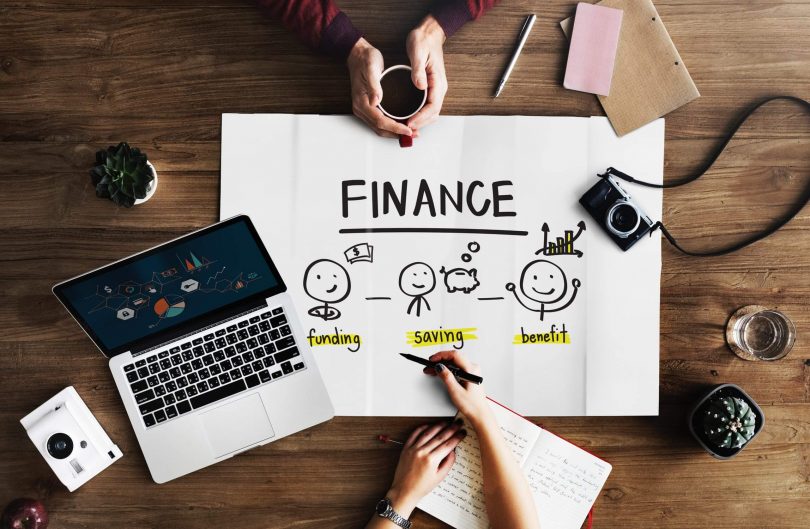3 Top Reasons For Investing Your Finances in 2024
3 Top Reasons For Investing Your Finances in 2024
Blog Article
What Are Some Of The Best Bonds Investment Options For 2024?
It is a smart strategy to put money into bonds 2024 to take advantage of diversification, income, and risk management. Here are a few of the best ways you can put your money into bonds this year.
U.S. Treasury Bonds are one of the safest investments due to the fact that they are backed up by the U.S. Government. There are three types of maturities: short-term T-bills, medium-term T-notes and long-term T-bonds.
Municipal Bonds - Issued by both the state and local government These bonds offer an interest rate that is tax-free. This makes them attractive to investors who fall in the higher tax brackets.
TIPS (Inflation-Protected Securities): These Treasury Bonds are index to inflation and protect against inflation risks.
Corporate Bonds:
Bonds with high ratings: Issued only by financially sound, stable companies with good credit scores, these bonds offer moderate returns and are safer than bonds with lower ratings.
High Yield Bonds (Junk Bonds): issued by companies that have lower credit rating, these bonds can provide better returns in order to offset the risk of higher.
ETFs and Bond Funds:
Bond Mutual Funds The funds combine the funds of a variety of investors to purchase various bonds. They are supervised by fund managers.
Bond ETFs are like mutual funds in that they offer diversification, but they trade on stock exchanges just like stocks. This gives you greater liquidity and lower costs.
International Bonds:
Emerging Market Bonds – Bonds issued by developing countries may offer greater returns, however they also carry a greater risk of being a victim due to their economic and political unstable.
Bonds from the developed markets: Bonds from developed nations, like European or Japanese Government Bonds, could offer diversification.
Green Bonds
Environmental, Social, and Governance ESG, also known as ESG Bonds are that are issued to fund environmentally-friendly projects. Investors who are interested in sustainability and social responsibility could benefit from these bonds.
Convertible bonds:
Hybrid Securities are bonds that could be converted to a number of shares issued by the issuing firm. They can also be converted into shares of the issuing company.
Floating Rate Bonds:
Adjustable Interest Rates: These bonds have interest payments that adjust periodically based on a benchmark rate, helping to limit the risk of interest rate volatility.
Private Bonds:
Direct lending and private debt Bonds that are issued by private companies or via private debt funds may offer higher yields but also more risk. They are also less liquid.
Municipal Bond Funds
Diversified Municipal Investments (DMI): These funds are a part of a portfolio of municipal bonds. They offer tax-advantaged returns and diversification amongst various municipalities.
Laddering Strategy:
Bond Ladders: This involves buying bonds with different maturities. When short-term bonds are mature, and the money is reinvested into longer-term debt, the risk is balanced by liquidity and the risk of interest rate fluctuations is managed.
The Year 2024: Additional Tips
Monitor Interest Rates. Central bank interest rate policies can impact bond prices as well. Knowing about the impact of interest rates will aid you in making informed decisions.
Credit Ratings: In order to mitigate default risk take note of the credit ratings of the bonds that you invest in.
Duration management: Control your interest rate risk by considering how long you intend to keep your bonds. Bonds with a shorter duration are less prone to fluctuations in interest rates.
Diversification Diversify among different kinds of bonds in order to lessen the risk.
Professional Advice: Consult an expert in financial planning to help you tailor your bond investment strategy based on your financial goals.
By carefully selecting and diversifying your bonds, you can construct a portfolio that will provide income, preserve capital and reduce risks in 2024. Take a look at the top Cross Finance for more info.
What Are The Best Mutual Fund Investments In 2024?
Mutual funds are a good way to diversify and manage your portfolio with professional expertise, while also allowing investors access to a vast range of different asset classes. Here are the best strategies to invest your money in 2024 mutual funds such as Index Funds
Broad Market Index Funds : These funds track major indexes such as S&P 500. They provide exposure to a large range of U.S. large-cap stocks, with low expenses and steady returns.
International Index Funds (IIF) These funds are based on indices for foreign markets and provide diversification as well as exposure to the global economic growth.
Sector-Specific Funds:
Technology Funds by investing in funds that focus on technology companies and technology companies, you can reap the benefits of growth in areas like AI cybersecurity, cybersecurity and cloud computing.
Healthcare Funds. These funds are a part of companies involved in pharmaceuticals, biotechnology or medical devices. The fund is benefited by an older population and advances in medical technology.
Bond Funds
Government Bond Funds (GFF) The funds are invested in U.S. Treasury securities or other bonds issued by governments, which provide stability and income, particularly in times of uncertainty.
Corporate Bond Funds The funds invest in bonds issued by corporations, offering higher returns than government bonds but with slightly more risk.
Municipal Bonds Funds: These funds invest in bonds issued by the state and local governments. They provide tax-free earnings and are therefore attractive to those with high incomes.
Balanced Funds
Allocation Funds (Allocation Funds): These funds combine bonds, stocks and other investments to create an investment portfolio that is balanced. They offer the potential for income and moderate risk.
Target-Date Funds: Designed for retirement planning, these funds automatically adjust the mix of assets to become more conservative as the date for retirement approaches.
ESG funds:
Sustainable Investing The funds are geared towards businesses that have good environmental, social, governance, and social practices. This appeals to investors with an ethical conscience. They could profit from the increasing attention to sustainability.
International and Emerging markets funds:
Market funds for developed markets: Diversification and exposure to stable economies is accomplished by investing in markets that are developed in countries outside the U.S.
Emerging Market Funds (EMF): These funds are primarily invested in emerging countries and offer a higher potential for growth, however they also carry a higher risk due the political and economic instability.
Real Estate Funds:
REIT Funds. Investment into Real Estate Investment Trusts via mutual funds can provide exposure to the property market without actually owning the property and also provides dividends as well in the potential for capital growth.
Dividend Funds:
High-Yield Share Funds: These fund concentrate on companies with high dividends. These funds offer steady income streams and are able to appreciate in value.
Dividend Growth Funds: Invest in companies with an extensive history of increasing their dividends. This suggests a solid financial position and potential for growth.
Small-Cap or Mid-Cap funds
Small-Cap The funds invest in smaller companies and can be able to have significant growth rates. However, they're more uncertain and high-risk.
Mid-Cap Funds These funds invest in mid-sized businesses, balancing growth potential and stability.
Alternative Investment Funds
Commodities Funds. These funds invest primarily in commodities including silver, gold and oil. This is a good option to safeguard against inflation or economic downturns.
Hedge Fund Replication Funds - These mutual funds are based on the strategies employed by hedge funds. They also provide sophisticated investment strategies with lower fees.
Other Tips for 2024
Expense Ratios - Pay careful attention to fees that are associated with mutual funds. Lower expense ratios will substantially boost the long-term return.
Diversification: Diversify your investment portfolio across different funds to spread risk and boost potential returns.
Performance History: Take a look at the performance history of the fund. But remember, past performance is not a reliable indicator of future outcomes.
Professional Advice Consult with an advisor to help you adapt your investment in mutual funds to your personal financial goals and risk tolerance and timeframe.
Automated Investment Plans: A lot of mutual funds have plans that let you invest frequently, which allows you to make the most of cost-averaging and building your investments over time.
By selecting mutual funds carefully that align with your investment strategy, and staying informed of market's trends, you can improve the mutual fund investments you make by 2024. 
Other Ideas for 2024's Year
Economic Factors
Keep track of economic indicators and trends which could impact borrower repayment capabilities, such as unemployment rates or interest rates. Also, monitor growth in the economy.
Loan Filters and Criteria:
P2P platforms offer advanced filters that allow you to choose the best loans for your needs, including the amount of the loan, repayment terms and debt-to-income ratio.
Resources for Education
Use educational materials, webinars and forums provided by P2P platforms to better understand the P2P lending environment and investment strategies.
Tax Implications
Be aware of the tax implications of P2P loans in the jurisdiction you reside in. This includes understanding how interest income is taxed and the tax consequences for defaults.
These strategies will help you make the most of peer-to-peer lending in 2024. They are able to balance your desire to earn attractive returns with prudent risk management.
Other Tips for 2024
Conduct thorough due diligence
Market Research: Find out the size of the market and its potential. Also, establish the level of competition.
Management Team: Review the management team to assess their background, track record, and abilities.
Financial Projections - Go over the financial projections, your business plan, and the health of your company.
Diversify Your Portfolio:
Spread your investments across different industries, startups, and stages of growth to lower risk and maximize the potential return.
Take the following steps to decrease your risk of getting sick:
Be aware that private equity and startups are investments that carry high risk, and the possibility of losing all of your investment. You should limit yourself to just a tiny portion of your overall portfolio to this type of asset.
Expertise and Networking
Establish relationships with seasoned investors, venture capitalists and industry experts to gain insights and access to top-quality investment opportunities.
Stay informed about the most current trends:
Keep up-to-date with current technological developments, trends in the industry and economic trends.
Compliance with legal and regulatory requirements:
Make sure all investments meet regulations and legal requirements. Consult financial and legal advisors to help you navigate the maze of investing in private firms.
Exit Strategy:
Understanding your investment exit strategy is essential, regardless of whether you intend to sell, merge and buy, or conduct secondary sales.
By using these strategies, and staying up-to-date it is possible to invest efficiently in startups and in private equity by 2024, while balancing high returns and sensible risk management.